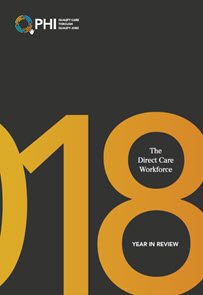The realities and challenges facing direct care workers are too often invisible in the public and political discourse. Additionally, these jobs are often wrongly described as low-skilled work or “women’s work,” which underplays the significant skill required to perform them —and the increased level of compensation, training, and general recognition and respect that these workers deserve. To positively shift the public narrative on direct care workers, advocates and other stakeholders need sufficient resources to launch impactful public education campaigns and build their communications capacities to advocate for direct care workforce reforms. Moreover, storytelling projects are a practical approach that could be better funded to enhance these workers’ visibility, amplify their voices, and draw on their wisdom to inform policy and practice in this sector.
RECOMMENDATIONS
To enable advocates to communicate effectively about direct care workforce issues and build broader awareness and support for this workforce, we recommend the following:
Fund public education campaigns that improve the general public’s understanding of the direct care workforce. Workforce, aging, and long-term care advocates have successfully designed public education campaigns in recent years to raise the visibility of challenges facing direct care workers and the value of this workforce. Additional campaigns should be produced and well-funded across the country to build awareness and support for these workers, as well as to spark policy and practice improvements that transform the quality of their jobs.
Build communications capacity to effectively advocate for direct care workforce policy solutions. The long-term care sector could benefit from an investment in market research, framing strategies, and message-testing related to the direct care workforce, to support leaders in better communicating the challenges facing this workforce to different audiences (according to their roles, values, demographics, and more). In addition, the communications capacity of advocates should be bolstered to ensure they have the staffing, knowledge, and tools to advocate effectively for direct care workers.
Support storytelling projects that empower direct care workers to tell their stories in their own words. As the paid frontline of care for older adults and people with disabilities, direct care workers have a lot to say about their jobs, long-term care delivery, and the entire sector. Storytelling projects should be designed and well-funded to capture workers’ unique insights using various multi-media formats and storytelling approaches, and widely propagated across digital media and other outlets. These projects should be participatory, collaborative, and democratic, allowing a diverse cross-section of workers to tell their own stories.








